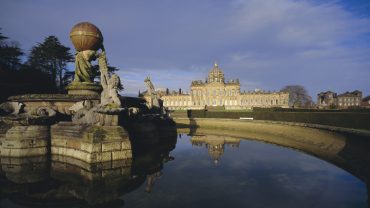Oxfordshire dazzles with beautiful wide-open countryside, ancient woodlands, and riverside villages, and this most homely of Home Counties forms the perfect setting for some of Britain’s most enchanting stately homes. The most famous historic houses in Oxfordshire aren’t just bricks and mortar, they’re chapters in the county’s – and the country’s – fascinating history.
Yet these stately homes in Oxfordshire deliver more than just lessons in history, many are also bursting with fabulous art, lush landscapes, and an irresistible atmosphere that’s unmistakably Oxfordshire. So, whether you fancy turret-spotting or a lazy afternoon cake in a sunlit courtyard, let’s explore the grandest historic homes in Oxfordshire.
Eynsham Hall
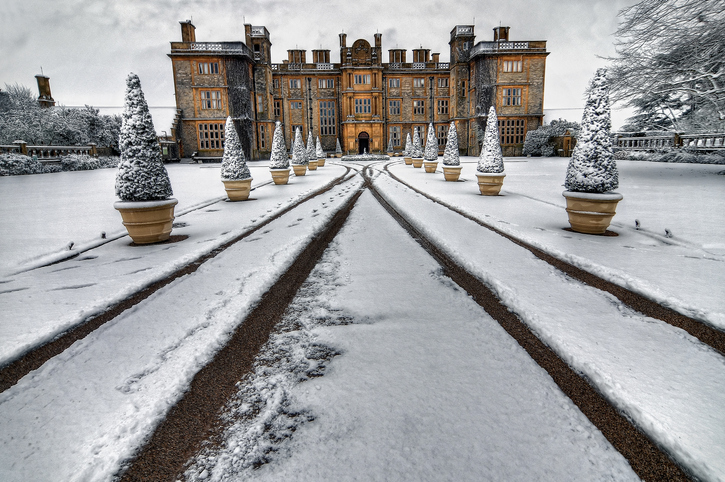
Eynsham Hall in winter (Credit: Photo by cuellar via Getty Images)
Just outside the village of North Leigh near Witney, Eynsham Hall is one of the most remarkable historic houses in Oxfordshire. Set within a wide and grand estate, it even includes an Iron Age hillfort. While the original Georgian house was probably built by James Lacy or his son in the 1770s, the current mansion is a splendid Jacobethan showcase (an architectural style mixing elements of Elizabethan and Jacobean), rebuilt in the early 1900s by architect Sir Ernest George for the Mason family.
Other additions to Eynsham included the North Lodge in 1845 by Charles Barry, one of the architects of the Houses of Parliament, and the game larder and dairy by Charles Henry Howell in 1883, one of England’s most well-known nineteenth century architects.
During World War II, the house was used for rest and recreation by US Army Air Corps personnel, as well as a maternity ward for women evacuated from London. From 1946 until the late twentieth century, the Home Office used Eynsham as a police training centre. In 2018, the house was bought by hospitality entrepreneur Sharan Pasricha MBE who transformed the stately home into a luxurious hotel, wedding venue, and members’ club, now called Estelle Manor.
Broughton Castle

Broughton Castle, Oxfordshire (Credit: AlexMcGuffie via Getty Images)
One of the most magnificent stately homes in Oxfordshire, Broughton Castle, nestled in sumptuous parkland just outside Banbury, is a moated and fortified manor built from Hornton ironstone. The original fortified core was begun in the early 1300s by Sir John de Broughton, with the distinctive gatehouse added early in the fifteenth century. Much of the main house was created during a major remodelling in the 1550s by Richard Fiennes, whose family, the Lords Saye & Sele, inherited the castle in 1451.
Originally built as a noble defence and family seat, Broughton Castle played a pivotal role during the English Civil War as a centre of opposition to King Charles I, suffering siege and damage after the nearby Battle of Edgehill in 1642. Today, it remains the private family residence of Martin Fiennes, 22nd Lord Saye & Sele, and is arguably one of the most historically significant historic houses to visit in Oxfordshire.
But the history of Broughton Castle doesn’t actually start in the 1300s. In 2021, archaeologists uncovered the remains of a substantial Roman villa beneath the castle’s grounds, including large wings, mosaic fragments, and a lead-lined sarcophagus belonging to a wealthy Romano-British woman. These finds reveal that the estate’s story stretches back far before the medieval manor – its grounds were once home to high-status Roman Britons, with terraced ponds and luxurious bathing areas suggesting centuries of prosperity. Today, this remarkable overlap of Roman and medieval history at Broughton helps make it one of the most intriguing stately homes in Oxfordshire.
Blenheim Palace
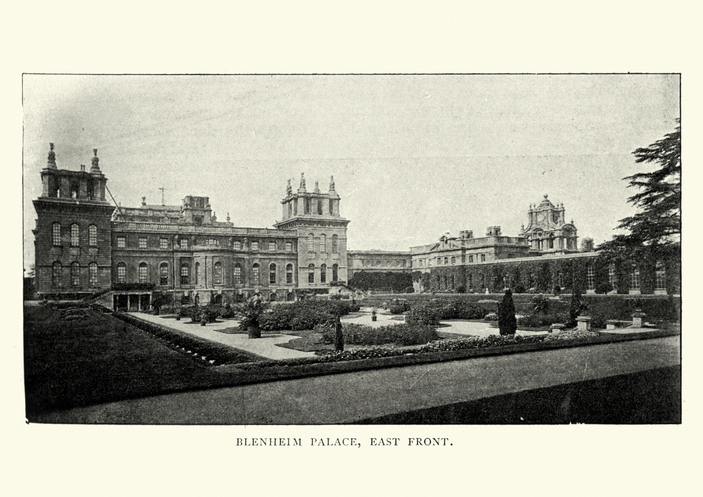
Late 19th century image of Blenheim Palace (Credit: duncan1890 via Getty Images)
Perhaps most famous as the birthplace and ancestral home of Sir Winston Churchill, Blenheim Palace is not just one of the grandest historic houses in Oxfordshire, but in the whole country. It’s a magnificent example of monumental English Baroque architecture, constructed between 1705 and 1722 with the financial support of Queen Anne as a national gift to John Churchill, 1st Duke of Marlborough, in gratitude for his decisive 1704 victory at the Battle of Blenheim during the War of the Spanish Succession.
Originally called Blenheim Castle, the palace was designed by Sir John Vanbrugh, with key contributions from Nicholas Hawksmoor. Its striking façade, dramatic porticos, and imposing towers were built to impress on an epic scale, intended as a tribute to both Britain’s military glory and the Marlborough legacy.
The palace and 2,000-acre park are still privately managed by the family, and one of the most extravagant stately homes to visit in Oxfordshire is open all year-round. Some of the house’s feature attractions include lavish state rooms, the 56-metre Long Library, and a Great Hall crowned by Sir James Thornhill’s painted ceiling. The outstanding landscape gardens and Great Lake were laid out by Lancelot ‘Capability’ Brown in the middle of the eighteenth century, and Vanbrugh’s Grand Bridge was intended to be one of England’s great river crossings. Sir William Chambers’ late eighteenth century Temple of Diana was, it’s said, where Churchill proposed to his future wife Clemmie in 1908.
In 1987, Blenheim Palace was declared a UNESCO World Heritage Site, cementing its status as one of the most celebrated stately homes in Oxfordshire.
Greys Court
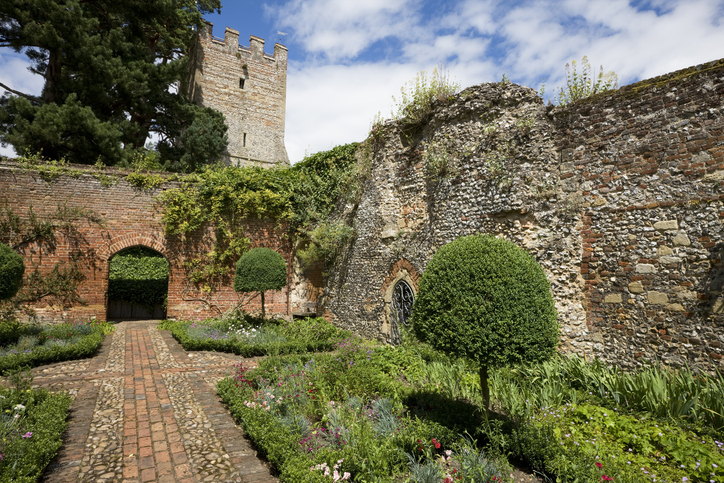
The walled garden and tower at Greys Court (Credit: stevegeer via Getty Images)
Originally the principal manor house of Norman chevalier Anchetil de Greye, one of the very few knights known with certainty to have fought alongside William the Conqueror at the Battle of Hastings in 1066, Greys Court sits in the rolling hills of the Chilterns, near Henley-on-Thames. One of the oldest stately homes in Oxfordshire, it’s a charming patchwork of medieval, Tudor, Georgian, and Victorian architecture, with the oldest part being the great tower which was built in around 1347.
Over the centuries, successive families – including the Stapletons, the Knollys, and finally the Brunners – reshaped the manor, and it was gifted to the National Trust in 1969. Today, its interiors celebrate everyday family life as much as aristocratic grandeur, with quirky furniture and evidence of generations who left their mark. The house remains open to visitors, while the productive and ornamental walled gardens are a stand-out feature. With a layered history including a Tudor wheelhouse, ancient door locks and mysterious medieval graffiti, Greys Court remains one of the most fascinating historic houses to visit in Oxfordshire.
Chastleton House
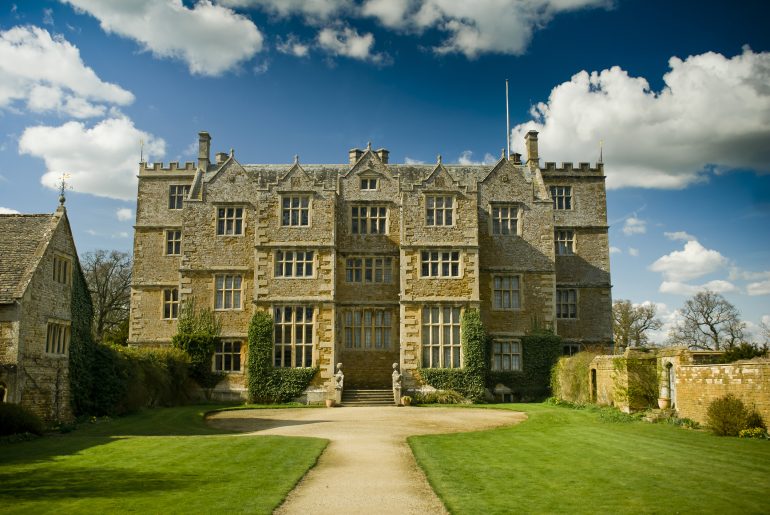
Chastleton House in Oxfordshire (Credit: Snowshill via Getty Images)
Chastleton House in Oxfordshire, close to the Gloucestershire border, is a magnificent example of Jacobean architecture and a rare, untouched window into England’s past. Built between 1607 and 1612 for the lawyer Walter Jones, possibly by prominent architect Robert Smythson, the house boasts characteristic stepped gables, elegant pinnacles, and classic mullioned windows that showcase the grandeur of early seventeenth century design.
What truly sets Chastleton apart is its remarkable state of preservation. Owned by the same family for nearly four centuries before transferring to the National Trust in 1991, one of the most interesting stately homes in Oxfordshire has been cared for with a ‘controlled decay’ approach rather than by restoration. This means visitors can experience the house much as it was centuries ago, complete with original Jacobean furnishings and decorative details.
The house is steeped in compelling stories, such as the daring act of Sarah Jones (sometimes referred to as Sarah Jewell) during the English Civil War, who’s said to have concealed her Royalist husband Arthur in a secret room and drugged pursuing Parliamentarian soldiers with laudanum-laced beer. Adding to its unique legacy, Chastleton is often credited as the birthplace of competitive croquet, thanks to Walter Whitmore Jones who formalised the rules there in the mid-1800s.
Stonor Park
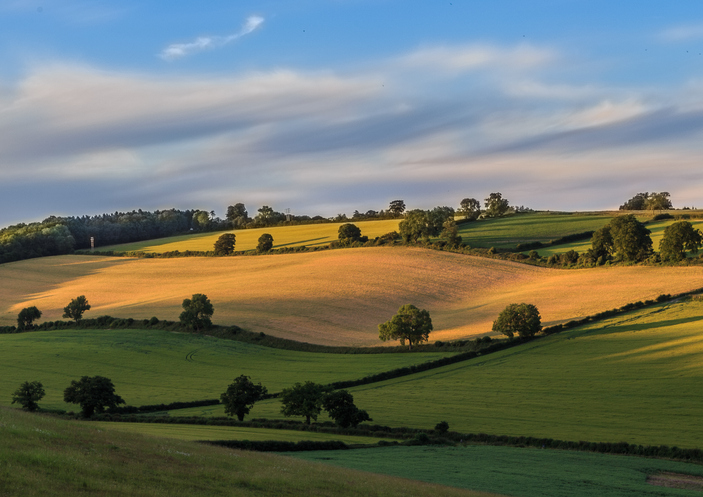
The Chiltern Hills, overlooking Stonor (Credit: Jim Donahue via Getty Images)
Nestled within the beautiful Chiltern Hills, Stonor Park is one of England’s most ancient family homes, inhabited by the Stonor family, Baron Camoys, for over 800 years. The house is a fascinating architectural mish-mash, blending medieval, Tudor, and Georgian influences. A private chapel dating from the twelfth century, built from flint and stone, is testament to the family’s longstanding Catholic faith, fiercely protected during the Reformation when Jesuit priests, including Edmund Campion, were sheltered in secret rooms.
What truly distinguishes Stonor Park is its broader historical landscape, including an ancient stone circle which may have inspired the estate’s name, lending the grounds an air of mystery and ancient ritual. Still very much a family home, the current owner is William Stonor, 8th Baron Camoys, believed to be a direct descendent of Thomas de Camoys, a commander in the English army at the Battle of Agincourt in 1415.
Today, Stonor Park remains one of the most captivating stately homes to visit in Oxfordshire, reflecting more than eight centuries of history, faith, and heritage through its atmospheric interiors, historic collections, and beautiful gardens.



